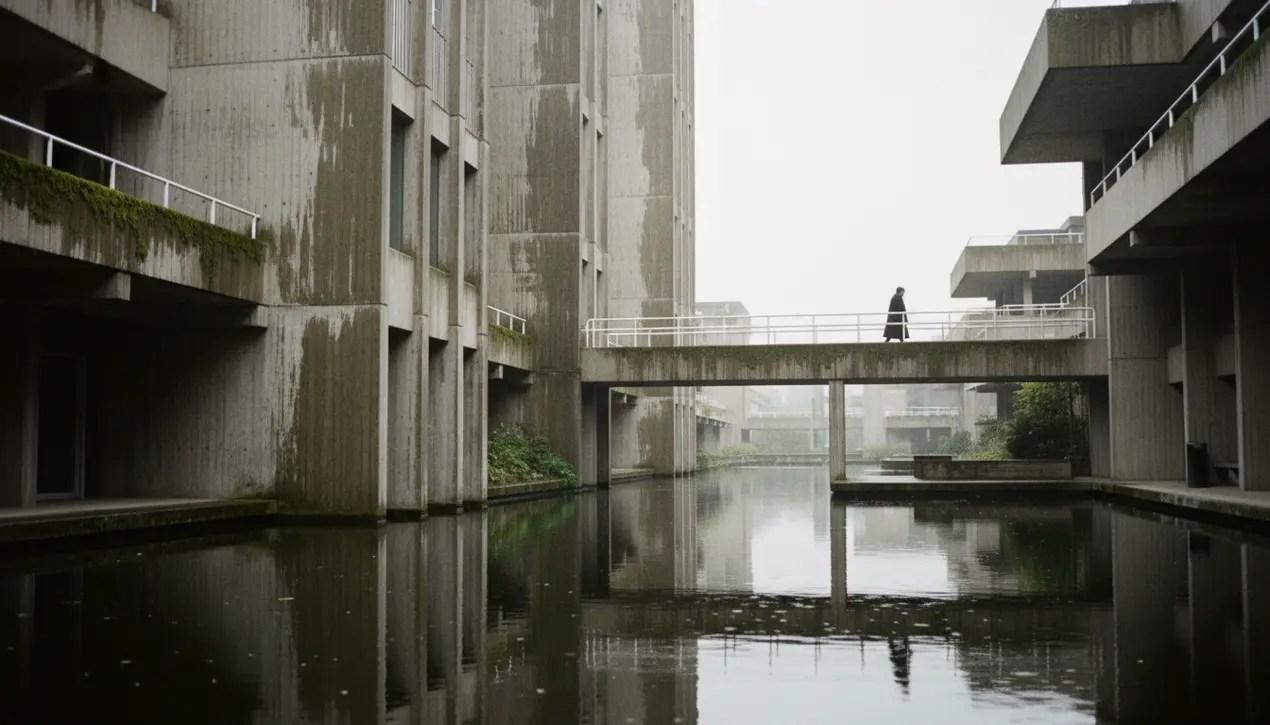- News
- theatre-arts
- concrete towers, water gardens and elevated paths: the barbican through david altrath’s lens

Entertainmenttheatre & artsArt Exhibitions
concrete towers, water gardens and elevated paths: the barbican through david altrath’s lens
AM
Amanda Lewis
13 hours ago7 min read3 comments
Through David Altrath’s discerning lens, the Barbican Centre emerges not as a static monument to Brutalism but as a living, breathing entity perpetually transformed by the ephemeral dance of light, weather, and human movement. Altrath’s photographic series, a masterclass in architectural portraiture, goes beyond mere documentation of the estate’s formidable concrete towers, serene water gardens, and the stark poetry of its elevated walkways.Instead, he captures the very soul of the structure, focusing on the constant, subtle shifts that animate this iconic megastructure. One can almost feel the damp chill of a London mist settling on the textured concrete, see the way a low winter sun casts long, dramatic shadows that carve new geometries into the familiar façades, and observe the fleeting reflections of clouds scudding across the still surfaces of the ornamental lakes.This approach is deeply cinematic, reminiscent of a director using natural elements to build mood and narrative; it’s as if he’s filming a silent epic where the weather is the protagonist and the architecture the steadfast co-star. The Barbican, completed in 1982 after decades of planning and construction on a site devastated by World War II bombings, was always intended as a radical vision of urban living—a city within a city.Architects Chamberlin, Powell and Bon envisioned a utopian complex where culture, residence, and nature coexisted in a fortified, yet open, concrete landscape. Altrath’s work subtly interrogates this vision, asking how this fortress of culture has aged and how it is experienced half a century later.He finds the humanity not in the people, who are often absent or rendered as anonymous silhouettes, but in the way the environment interacts with the building’s sheer mass. A sudden downpour transforms a paved plaza into a shimmering canvas; a break in the clouds turns a brutalist wall into a canvas of gold.This is not just photography; it is a study in phenomenology, exploring how we perceive and feel space. Critics might argue that Brutalism’s raw, uncompromising aesthetic is cold and inhuman, but Altrath’s work powerfully refutes this.By highlighting the patina of age, the streaks of rain, the moss clinging to concrete, and the way foliage softens the hard edges, he reveals a structure that is deeply organic and integrated with its environment. His compositions often frame the Barbican against the ever-changing London sky, creating a dialogue between the man-made and the natural that is both tense and harmonious.The series serves as a vital contemporary document at a time when the preservation of Brutalist architecture is a heated topic of debate. Buildings of this era are frequently under threat of demolition or insensitive renovation, seen by some as blights on the cityscape.Altrath’s eloquent visual argument demonstrates their enduring power and beauty, showing that their value lies not in a sterile perfection, but in their capacity to weather, change, and engage in a dynamic relationship with time and the elements. In this, his work shares a kinship with the films of directors like Andrei Tarkovsky or the paintings of J.M. W.Turner, artists equally obsessed with capturing the transient effects of light and atmosphere. He doesn’t just show us a building; he makes us feel its presence in the world, a stoic yet sensitive giant whose character is endlessly rewritten by the sky.
#featured
#Barbican Centre
#Brutalist architecture
#photography
#David Altrath
#concrete
#design
Stay Informed. Act Smarter.
Get weekly highlights, major headlines, and expert insights — then put your knowledge to work in our live prediction markets.
Comments
Loading comments...
© 2025 Outpoll Service LTD. All rights reserved.